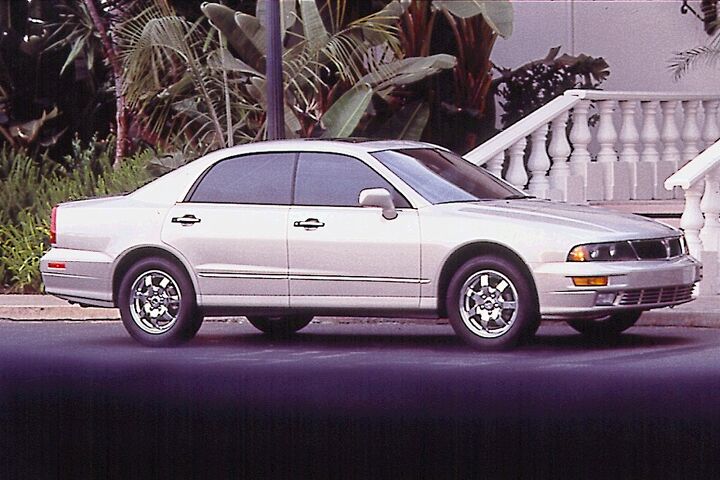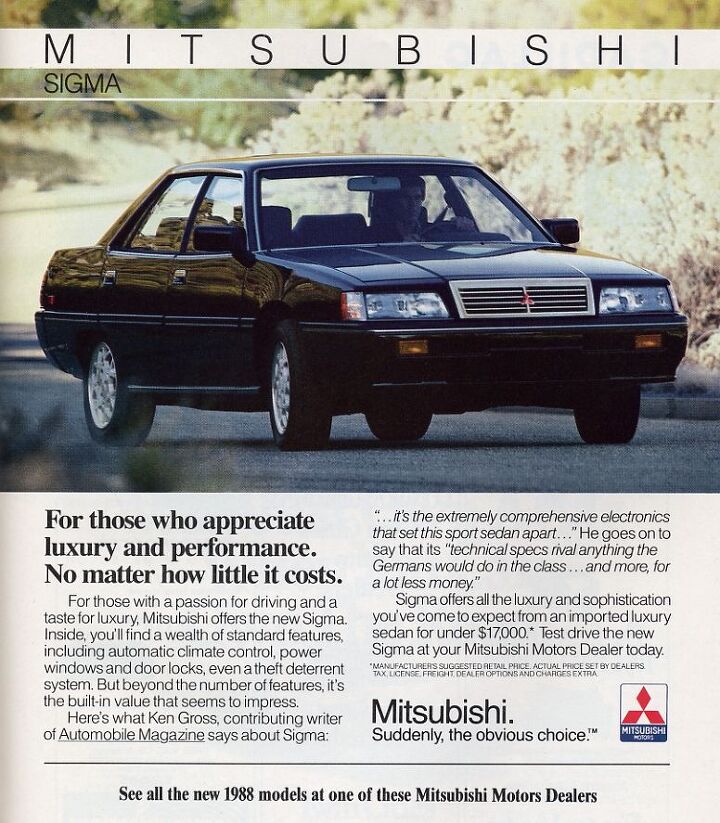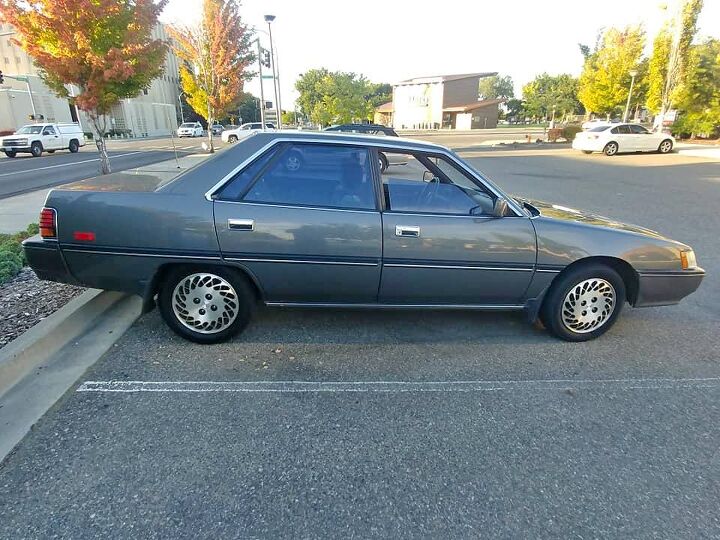#Sigma
Rare Rides Icons: The Mitsubishi Diamante Story (Part IV)
Last time on our Diamante coverage, we learned about the near-luxury sedan’s somewhat delayed introduction to America. In the two-year translation from a Japanese market car to an American one, Diamante lost the majority of its interesting and advanced tech features and adopted a cheaper suspension design. Today we’ll find out what happened when Mitsubishi pitched the new and de-contented Diamante against the Lexus ES 300.
Rare Rides Icons: The Mitsubishi Diamante Story (Part III)
Today is the third installment in our coverage of the Mitsubishi Diamante, the Diamond Star brand’s only luxury offering ever sold in the North American market. Part I introduced us to the Diamante via the Sigma. That fancy hardtop Galant gave way to the Diamante in 1992, based on an extended length Galant platform. The second-generation hardtop sedan and its wagon counterpart were finished for 1995 on dealer lots, though fleet buyers (which fleets though?) had a Diamante available to them in 1996. In 1997, Mitsubishi was back with an all-new Diamante and aimed even higher than it had before.
Rare Rides Icons: The Mitsubishi Diamante Story (Part II)
In Part I of our Rare Rides Diamante coverage, we talked almost exclusively about our subject’s predecessor, the Sigma. Alternatively called Galant Σ, it was a hardtop luxury version of the standard Galant offered in the US market. It was dated when it arrived, too small, and not differentiated enough from the Galant to warrant its high price. U.S. customers mostly ignored it, and Canadians never knew it existed since they didn’t receive any Mitsubishis until 2002. Headed into the Nineties, Mitsubishi had no upscale sedan offering at all in North America, as the Galant was the firm’s largest car. That changed in 1992 with the arrival of the all-new Diamante.
Rare Rides Icons: The Mitsubishi Diamante Story (Part I)
Rare Rides Icons has featured much Japanese sedan content lately, including the mid-Eighties sedan mainstays and most recently a series on the luxurious and conservative Toyota Cressida. However, there’s a mainstream Japanese brand (or two) yet to be included in our sedan considerations. One of them is Mitsubishi, and today we’ll discuss the only true upmarket product the company ever offered in North America. It’s Diamante time.
Rare Rides: The 1989 Mitsubishi Sigma - Excellent Parts Availability Guaranteed
Luxury, elegance, Mitsubishi: Three words that sound just right in a singular sentence. Similarly, one sedan expresses all three of those words in a magnificent way. It’s a very rarely seen Mitsubishi Sigma, from 1989.
Junkyard Find: 1990 Mitsubishi Sigma
The fifth-generation Mitsubishi Galant came in a funky “pillared hardtop” configuration for the United States market in the 1988 through 1990 model years. Few bought them and almost none survived into the current century, making a Sigma one of the rarest of Junkyard Finds. Five years ago, I found this ’89 in a California yard, and now I have discovered this ’90 in Denver.
Junkyard Find: 1989 Mitsubishi Sigma
Remember the Mitsubishi Sigma? Nobody does! It was a semi-oddball four-door hardtop version of the Galant that was sold in the United States just for the 1989 and 1990 model years, and I believe this car— which I spotted at a San Francisco Bay Area self-service yard over the weekend— is the first one I’ve ever seen in person.





















Recent Comments